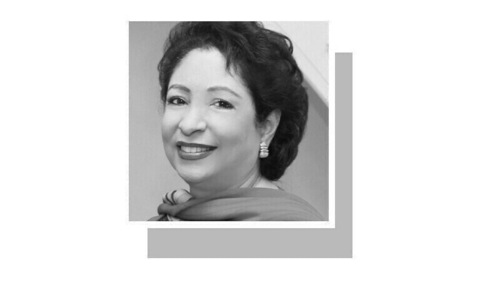
PAKISTAN is still reeling from the recent terrorist attack on the Lal Shahbaz Qalandar shrine at Sehwan that claimed nearly 100 lives. This isn’t the first time a Sufi shrine has been attacked. Data Darbar in Lahore was hit by two suicide bombers in 2010. Fifty people were killed. In nearly seven years, nothing has changed: we are no closer to stopping terrorism, ending extremism, or healing the divisions in society that bring one group of Muslims to kill another, just because of differing beliefs.
Three days after the Sehwan attack, a group of activists including feminist icon Sheema Kermani travelled from Karachi to Sehwan to take part in the dhammal. The shrine keeper and the devotees had already returned to their rituals, the shrine keeper ringing the shrine’s bell at 3:30 am the night of the attack and declaring that even this act of sacrilege could not keep the Lovers away from the saint’s shrine. This is how Sufis think of themselves: as lovers, with God as their Beloved. Everything they do is meant to propel them towards fanaa, that ecstatic state in which the individual ego is annihilated in the greater Truth that is God.
No one could keep the Lovers away from the shrine at Sehwan.
When Sheema Kermani stood up to participate in the dhammal, adding her own twist of performance and classical dance to the mix, someone took a photograph of her against the backdrop of the shrine. She stands with her arms raised and her body bent like a swaying tree. She’s dressed in orange, to match the orange scarves of the shrine-goers and of the Sindhi musicians who play in accompaniment to her dignified movements. Shrine-goers and activists, male and female, encircle her, clapping their hands and taking photographs.
Other women then stood up to join the dhammal, participating in an age-old ritual that is neither dance nor performance, but a spiritual practice designed to reduce the ego to nothingness.
The Sufi dervishes of the Mevlevi order engage in a similar practice when whirling; called Sema, it is a form of moving meditation in which the music and movement direct the worshipper to the perfection of God.
This photograph is everything that Sindh represents: grace, beauty, tolerance, equality of all human beings in front of God. It’s an iconic image that went viral on the internet and made it to the front pages of many newspapers in Pakistan. I wish that someone would turn it into an oil painting; it could be Pakistan’s version of Rembrandt’s The Night Watch for its aesthetics, Picasso’s Guernica for its symbolism. It should hang on the walls of the State Bank.
As soon as the photograph began to circulate, two types of conversations sprung up around it. The gist of the first: that this was a brave thing to do, that this is the country we want, where our cultural traditions and our local religious practices are considered sacrosanct and inviolate. That terrorism cannot defeat us, that we reject violence not just as provocation, but also as response. This image is the correct — the only — response to the vileness of the bomb attack on innocent women, children, and men.
The second conversation went like this: This is not Islam. The shrines are sacrilegious. Women shouldn’t dance like this in public. Women shouldn’t be at shrines. The people who died at the shrine deserved their fate, because they were participating in ‘wrong’ acts. This isn’t a dhammal, it’s a mujra. To which Sharmila Faruqi, former adviser for Sindh culture, tweeted that dhammal and mujra were vastly different from one another. This makes perfect sense in our age of ignorance.
There’s a serious lack of knowledge among Pakistanis about our syncretic traditions. Many Pakistanis, especially the young, know nothing of Sufism beyond its superficial portrayal in Bollywood movies, or the lyrics of a Nusrat Fateh Ali Khan or an Abida Parveen song. They might read Elif Shafak’s The Forty Rules of Love and swoon over its lyricism but they won’t bother to learn about the vast body of poetry that informs Sufism in South Asia. In this climate of ignorance, it’s easy to fall into the trap of misunderstanding Sufism as a fixed pole in opposition to what many perceive as the ‘correct’ version of Islam.
The truth is that hate isn’t born when the gun is fired or the bomb explodes. Hate is born in conversations like these, the minute we start boxing acts into absolute right and wrong, and display the self-righteous certainty so characteristic of our nation. When we make an ‘other’ out of people, and distance ourselves from them, we drive out empathy and respect, an act that then makes violence against others possible. To get rid of terrorism in Pakistan, we have to first realise that with our words, we are all parents in its conception and midwives present at its birth.
The writer is an author.
Twitter: @binashah
Published in Dawn, March 1st, 2017











































